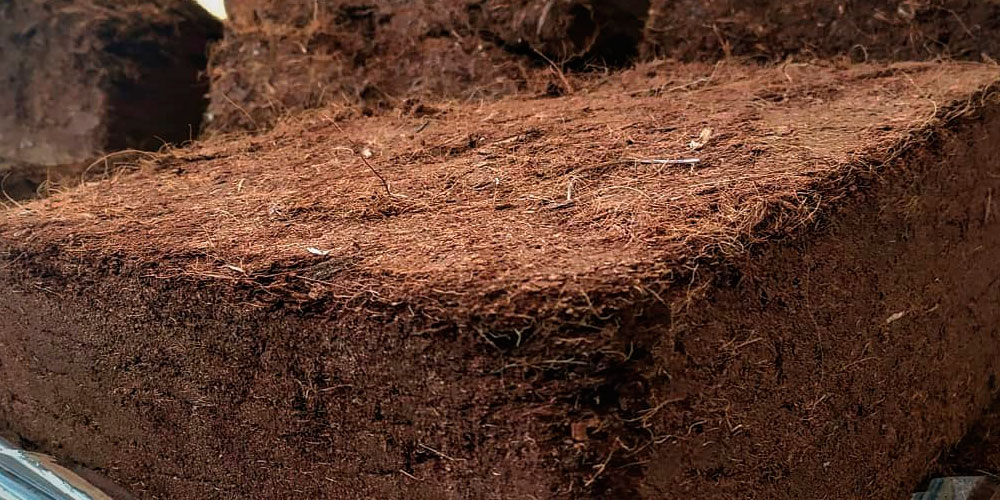Coconut fiber has been one of the last substrates to enter the world of hydroponic cultivation. Quite after rock wool, perlite, sand, etc. However, for its qualities, it did so with great success, being currently one of the most used in soilless cultivation.
This material is used in various industrial areas such as construction, textiles, automotive, etc. and more recently, in both professional and hobby agriculture, and even in gardening.
This raw material, coconut fiber, is used as a component along with other materials, in substrate formulations of seedbeds or substrates for ornamental plants. In high-yield horticulture and floriculture, it does so basically as a unique material in soilless cultivation.
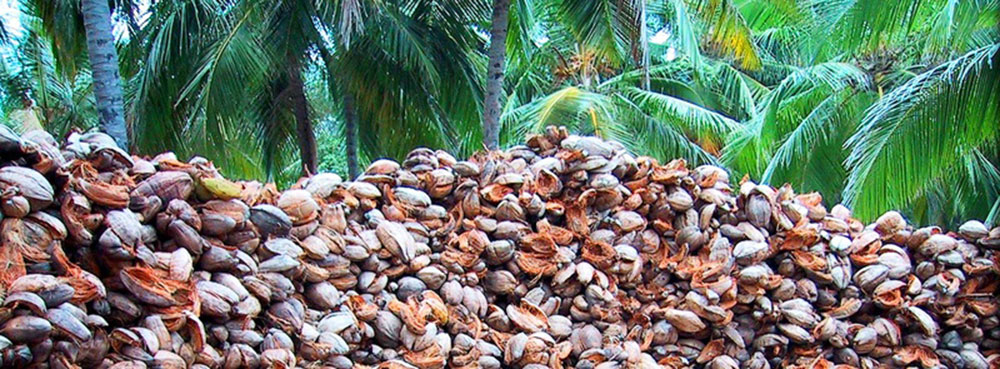
Where does coconut fiber come from?
Coconut fiber is a by-product derived from the fruits of the coconut tree (Coconucifera), a specie of palm tree in the family Arecaceae and can be found in areas bordering tropical sandy beaches in the Caribbean Sea, Indian Ocean and Pacific.
The fiber itself is extracted from the mesocarp of the coconut, the seed or endosperm is collected for food purposes or for nurseries, while the shell that covers it (the mesocarp) is processed and after extracting its fibers, these are selected for according to lengths and characteristics, destined to one market or another. For example, the finest fibres and dust are derived from agriculture while the longest go to the textile industry.
How is coconut fiber obtained as a commercial product for hydroponics?
To obtain a quality coconut fiber for use in hydroponics, the coconut fiber under goes several processes.
Fruit harvesting phase. These are collected manually at the places of origin. One of the most representative is located on the island of Sri Lanka (Ceylon), an island nation in the south of India, in the Indian Ocean.
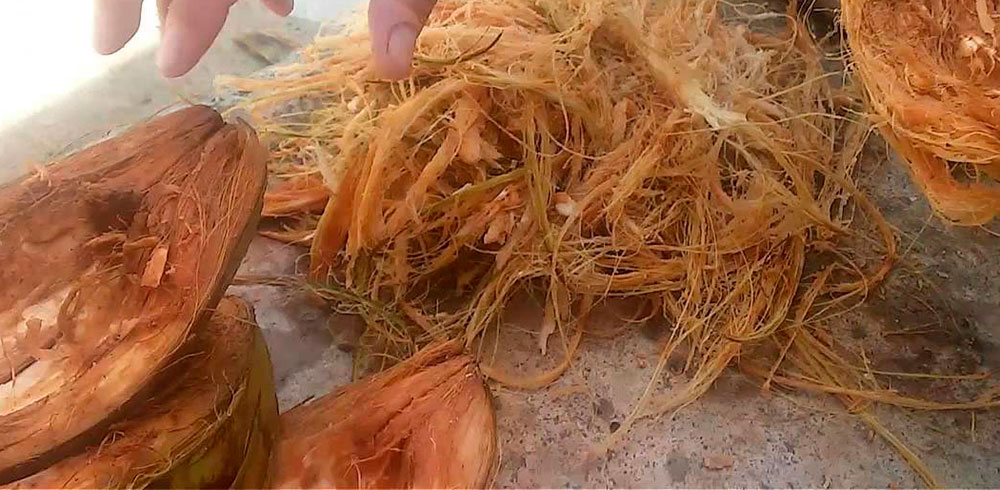
Extraction of the seed. This consists of extracting the endosperm (seed) from the mesocarp (shell). The first is oriented to seeds for nurseries and especially to the extraction of products for food and cosmetics. The second for various industrial products.
Grinding phase. With the grinding of the mesocarp, once dry, a base product is obtained for different uses.
Granulometric classification phase. This part, for use in horticulture, is a delicate phase. Not all fibers and sizes will be suitable. Its quality will have a decisive influence on its physical properties and, as a consequence, on its cultivation behaviour and the technique used.
On the other hand, coconut fiber for soilless cultivation is a product resulting from different types of fibers: coarse and fine particles and short fibers. With the variation in their percentages, different coconut fiber substrates will be obtained, according to the cultivation technique and species to be cultivated.
Washing phase of the fibres. For the growing area, the coconut fiber must be subjected to a wash to eliminate possible presence of salts, especially those of sodium chloride. The growth of these palm trees is on the shores of the sea and therefore, subjected to saline winds.
This process is usually performed at the source, although it can also be performed at destination depending on the manufacturer.
Compaction phase. To facilitate its transport and handling. The selected coconut fibers are subjected to compaction in the form of bricks, boards or blocks.
Transport phase. Compaction makes transport considerably cheaper. Remember that it is manufactured in places very distant from those of its use. This is usually in containers via cargo ships.
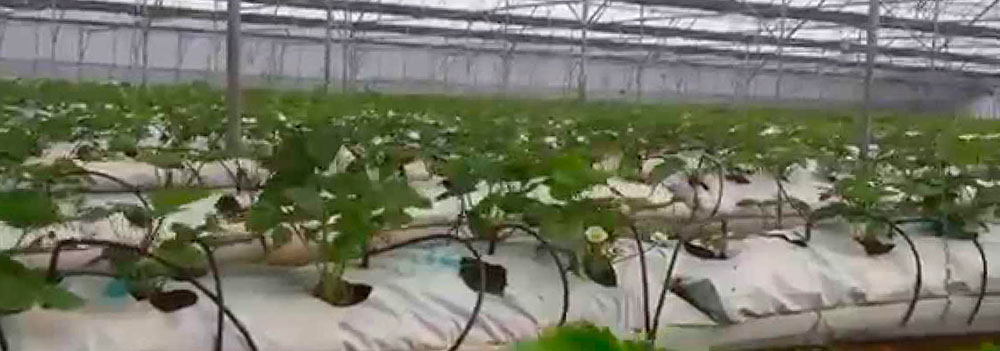
Phase of decompactation and cultivation. Once at destination, the blocks are subjected to a decompactation by hydration. From there, the cultural techniques of cultivation are applied: water saturation, washing, frequency of watering and fertigation.
Uses of coconut fiber cultivation
Focused on the use of coconut fiber as a substrate for hydroponics, it is used both for intensive crops under greenhouse and outdoors.
In the first case, they are crops that are already being grown in other types of substrates such as perlite, rock wool, sand, etc. Pepper, tomato or zucchini are a clear example. In these cases, coconut fiber is used exclusively as a substrate.
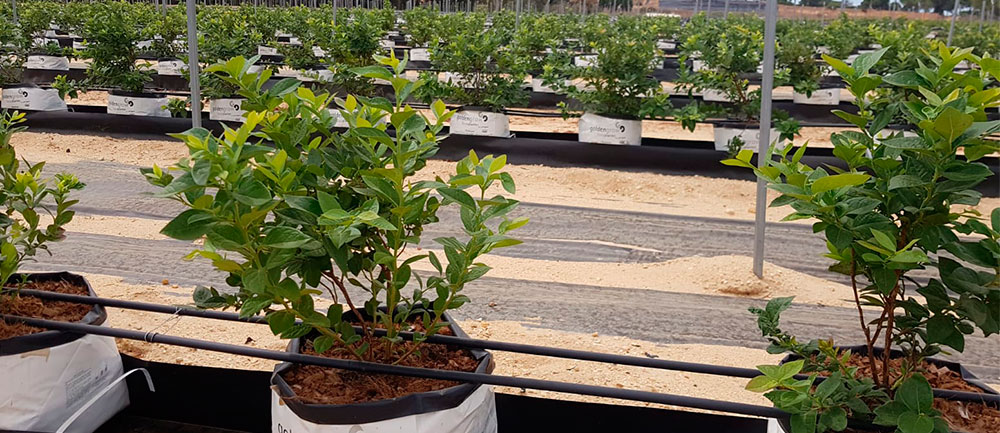
On the open field, a more recent cultivation technique is needed, and this substrate is one of the few that is being successfully introduced. Crops such as raspberry or blueberry, maintain important areas of cultivation in different areas of the world.
Its cultivation is carried out in large containers or culture bags, in fertigation and the coconut fiber can be in a 100% or forming an important part of the substrate used.
Coconut fiber cultivation systems
As a crop without soil, containers that holds the substrate and facilitate its correct handling are needed. In this case, there are different systems of cultivation in coconut fiber.
In most of the cases, these are associated with a leachate collection system.
Growing channels. With plastic material such as polycarbonate or polypropylene, terraces are made, lined or not with polyethylene film, on which the coconut fiber is deposited creating controlled areas of cultivation.
Culture pillow sacks. They are the traditional culture sacks placed in line, very similar to perlite sacks for hydroponics, with several plants per sack.
Large culture bags. They are large sacs of different sizes and volumes and are designed for the cultivation of shrubby plants outdoors.
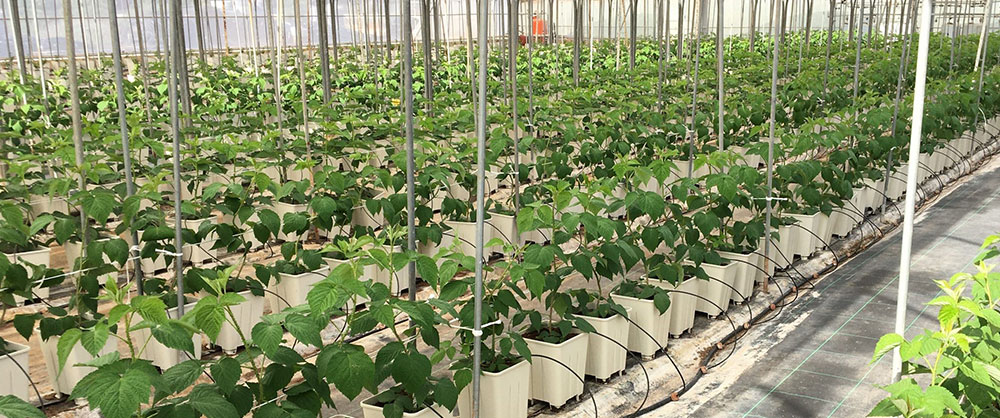
Cultivation containers. Although they can also be used outdoors, it is usually for cultivation under greenhouse. They can be plastic or expanded polystyrene. Its use includes only one floor per container.
Fertilizers for cultivation in coconut fiber
Coconut fiber is an organic and very stable material. This has two clear differences from other types of substrates such as perlite or rock wool, both inert. One is its high Cation Exchange Capacity, facilitating intermittent fertigation. The other, its organic character gives it a certain biological activity, a factor to be taken into account during fertilization.
Its biochemical properties give it management characteristics quite similar to those of the soil from an agronomic point of view. In this context, some aspects to take into account in nutrition are: large number of organic colloids, presence of microbial activity, capillary forces (tremendously important), etc. factors that are facilitated by the use of coconut fiber as a base of hydroponic cultivation on the open field.
JISA offers a complete catalog of fertilizers for use in hydroponics. Fertilizers specialized in plant nutrition, as well as agricultural biostimulants that allows us to act in strategic moments of the crop that contribute to obtain its maximum profitability.
As an added value to the farmer, he/she has the advice of JISA’s technical commercial team that, with its training and experience, can analyze and are able to develop the correct fertilizer plan for each case.
Cultivation in coconut fiber in a waste-free agriculture
Regarding coconut fiber for hydroponic cultivation, its use is not the limiting factor to achieve an environmentally friendly agriculture. Yes, the types of phytosanitary products used are.
Coconut fiber provides, among its qualities, a material from controlled coconut plantations (Coco nucifera), so that mines and natural spaces are not depleted. It is biodegradable, causing no impact after its useful life. It also brings social advantages because it transfers economic value to the countries of origin, especially those in the developing tropics where these palm trees are grown.
During cultivation, the use of fertilizers in fertigation, can contribute to an agriculture respectful with the environment and free of residues. JISA has developed a complete catalogue with plant biostimulants within its specialties of organic fertilizers, algae extract, amino acids, special biostimulants and microorganisms; Soil improvers in humic acids and salinity correctors; Plant nutrition in liquid foliar fertilizers, solid foliar fertilizers, crystalline fertilizers, chelated and deficiencies correctors; and ecological fertilizers in which ECO solutions are grouped for all the needs in agronutrition in its different stages of cultivation.
